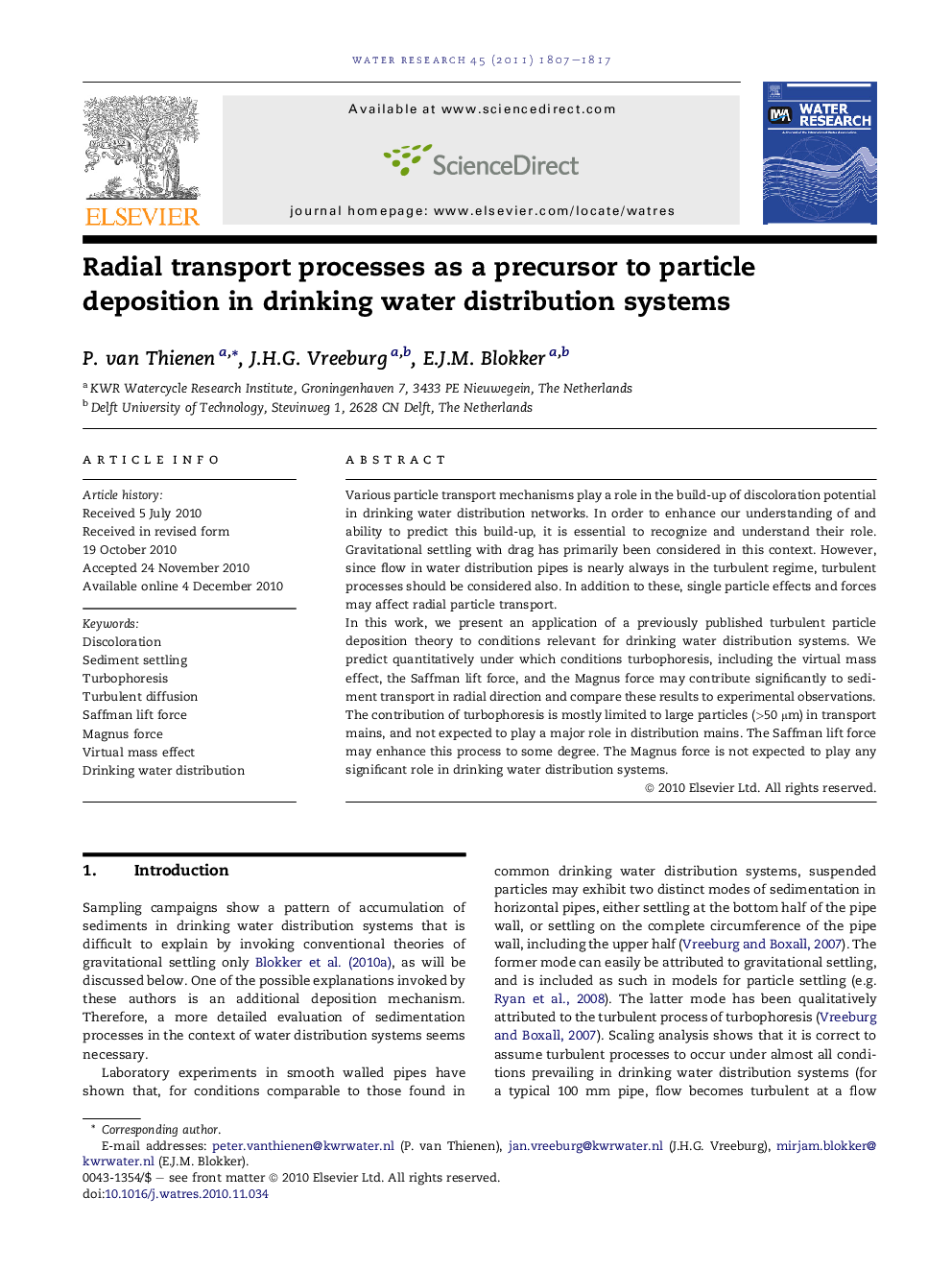| Article ID | Journal | Published Year | Pages | File Type |
|---|---|---|---|---|
| 4483392 | Water Research | 2011 | 11 Pages |
Various particle transport mechanisms play a role in the build-up of discoloration potential in drinking water distribution networks. In order to enhance our understanding of and ability to predict this build-up, it is essential to recognize and understand their role. Gravitational settling with drag has primarily been considered in this context. However, since flow in water distribution pipes is nearly always in the turbulent regime, turbulent processes should be considered also. In addition to these, single particle effects and forces may affect radial particle transport.In this work, we present an application of a previously published turbulent particle deposition theory to conditions relevant for drinking water distribution systems. We predict quantitatively under which conditions turbophoresis, including the virtual mass effect, the Saffman lift force, and the Magnus force may contribute significantly to sediment transport in radial direction and compare these results to experimental observations. The contribution of turbophoresis is mostly limited to large particles (>50 μm) in transport mains, and not expected to play a major role in distribution mains. The Saffman lift force may enhance this process to some degree. The Magnus force is not expected to play any significant role in drinking water distribution systems.
Research highlights► Turbulent diffusion affects particle deposition in distribution mains. ► Turbulent diffision and turbophoresis affect particle deposition in transport mains. ► The Saffman lift force may enhance turbophoretic deposition rates in transport mains. ► The Magnus force is not relevant in drinking water distribution.
